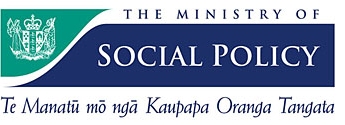
-
Social Policy
- MAKING THE RETURN TO WORK WORTHWHILE
In the papers, the Ministry of Social Policy criticises attempts by the previous National administration to push beneficiaries into jobs which could make them worse off. It says that the combined cost of childcare, tax and abatement rates gives domestic purposes beneficiaries no incentive to work full-time.The ministry: "When the cost of childcare is subtracted from their gross earnings, they are better off staying on the benefit and working part-time. It could be argued that it is unfair to coerce people into taking up jobs which do not leave them financially better off than if they stayed on the benefit."
- In a national survey last year, 30% of sole parents described childcare as a barrier to
having a job, with cost as the biggest factor. The ministry recommends increasing the 50%
childcare subsidy rate for low-income parents, and paying it for more than the present maximum of
30 hours a week.
Reaction: Steve Maharey, Minister of Social Services and Employment, has told the New Zealand Herald that he will seriously consider this option. Maharey: "The previous government placed enormous pressure on beneficiaries and really made little progress on the issue. I think that's because they were not taking seriously these wider issues, which are very practical for beneficiaries. They're things like: `How do I look after my kids properly?' ` If I take this casual job in an orchard, how fast can I get back onto a benefit?, `Will I make any real money because of transport costs?' These are good, practical issues, and unless you solve them, you don't really solve the issue..."
- A SOCIAL POLICY SNAPSHOT
AT HOME
— Households better off this decade: 10%
— Households worse off: 70%
— One-person households: 20% (14 in 1976)
— Households containing couples with children: 32% (48% in 1976)
— Home ownership: over 70 %
— Households receiving accommodation supplement: more than 300,000 people, 49% of them renting privately. - THE FAMILY
— Sole parents with paid job: 65% (40% in 1976)
— Partnered mothers with paid job: 65% (40% in 1976)
— Families with no parent working: 23% (14% in 1986)
— Children living with one parent: 41 % ( Maori), 29%(Pacific Island) 17% (European)
— Families on benefit for 10 years: 20,000+
— Families with severe multiple disadvantages: 25,000AT WORK
— Proportion of part-time jobs: 24% (17 in 1986)
— Beneficiaries in part-time work: 15% last September (10% in 1992) - MAORI GAP
— Maori Leaving school without qualifications: 38%
— Non-Maori Leaving school without qualifications: 13%
— Unemployment among Maori aged 15-24: 28%
— Unemployment among Non-Maori aged 15-24: 12% - GROWING OLD
— People 65-plus today: 12% of population
— People 65-plus by 2031: 21% of population
— Workers to superannuitants today: 4:1
— Workers to superannuitants by 2041: less than 2:1
— Cost of super: $5.3 billion (in 1998-99)Source Ministry of Social Policy briefing to incoming government 1999
Sources Ministry of Social Policy Post Election Briefing Papers 1999, available on the internet;
New Zealand Herald 8 January 2000 "A nation in grave need of repair" by Andrew Laxon; "Childcare plan for beneficiaries" by Andrew Laxon;
New Zealand Herald 10 January 2000 "Govt sympathetic to childcare plan" by Andrew Laxon;
The Dominion 11 January 2000 "Aging population will put economy under strain" by Mathew Brockett.
The full version of this Briefing Paper to the Incoming Minister is available to the public on the internet.
type: MS Word (.doc) file
internet link: http://www.mosp.govt.nz/comms/files/msp%20peb.doc

Top of Page
This Letter's Main Page
Stats | Subscribe | Index |
The Jobs Letter Home Page | The Website Home Page
jrt@jobsletter.org.nz
The Jobs Research Trust -- a not-for-profit Charitable Trust
constituted in 1994
We publish The Jobs Letter
— from the briefing papers
from The Jobs Letter No.115 / 17 January 2000

The Ministry of Social Policy says that rescuing about 25,000 NZ families from a long-term poverty trap is the biggest social challenge facing our politicians. The ministry says that about 5% of families remain seriously disadvantaged and excluded from NZ society.
The ministry: "Without attention, this could lead to the long-term disengagement of part of our society and threaten social cohesion. It is also a source of fiscal vulnerability and could jeapardise economic growth." The ministry suggests more early intervention to help these families along with better childcare and financial incentives to encourage the parents off benefits and back to work.
The briefing papers note that overall growth in benefit numbers and welfare spending is starting to slow. But almost one in five NZ'ers aged between 15 and 64 years is still a beneficiary.
The papers also urge the new government to stop thinking in three-year budget cycles and take a longer-term view of tackling welfare problems. Innovative solutions may cost more at first, but as the state will spend about $60 billion on benefits in the next ten years, even a 5% reduction in payments would save us $3 billion.






